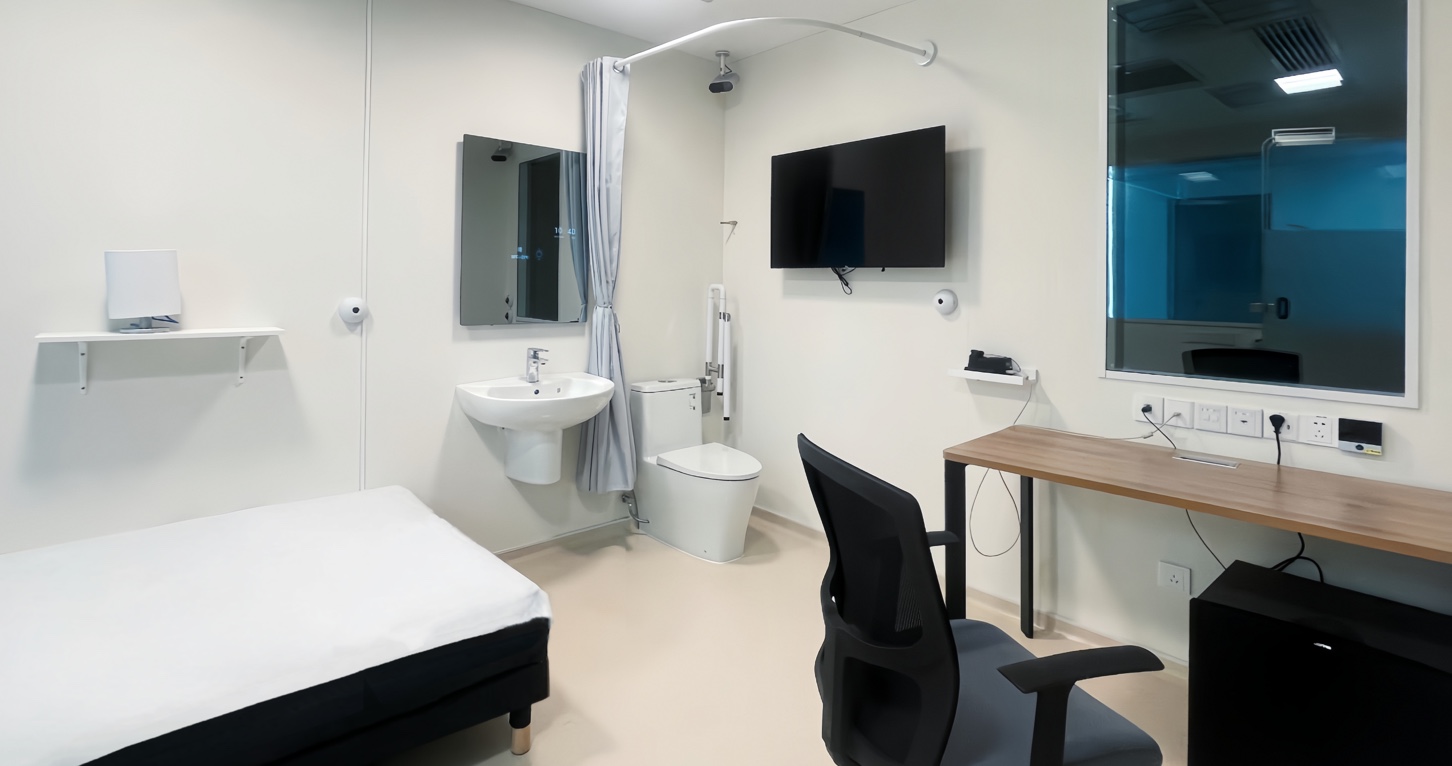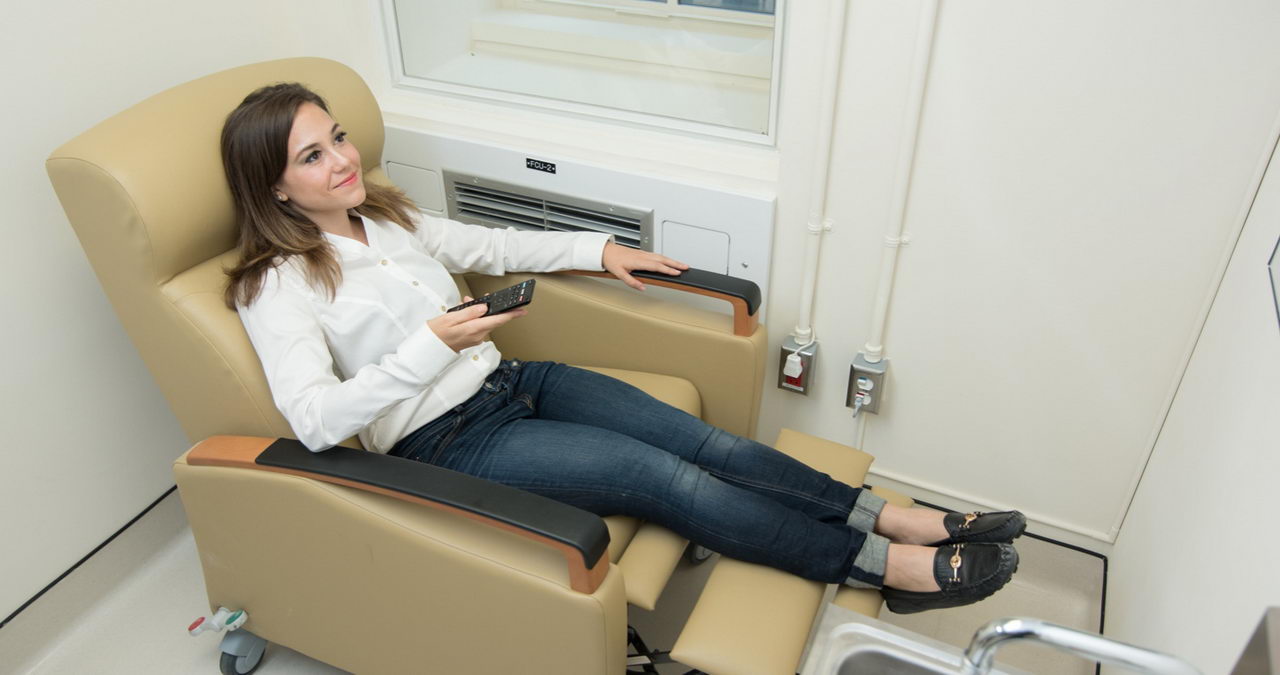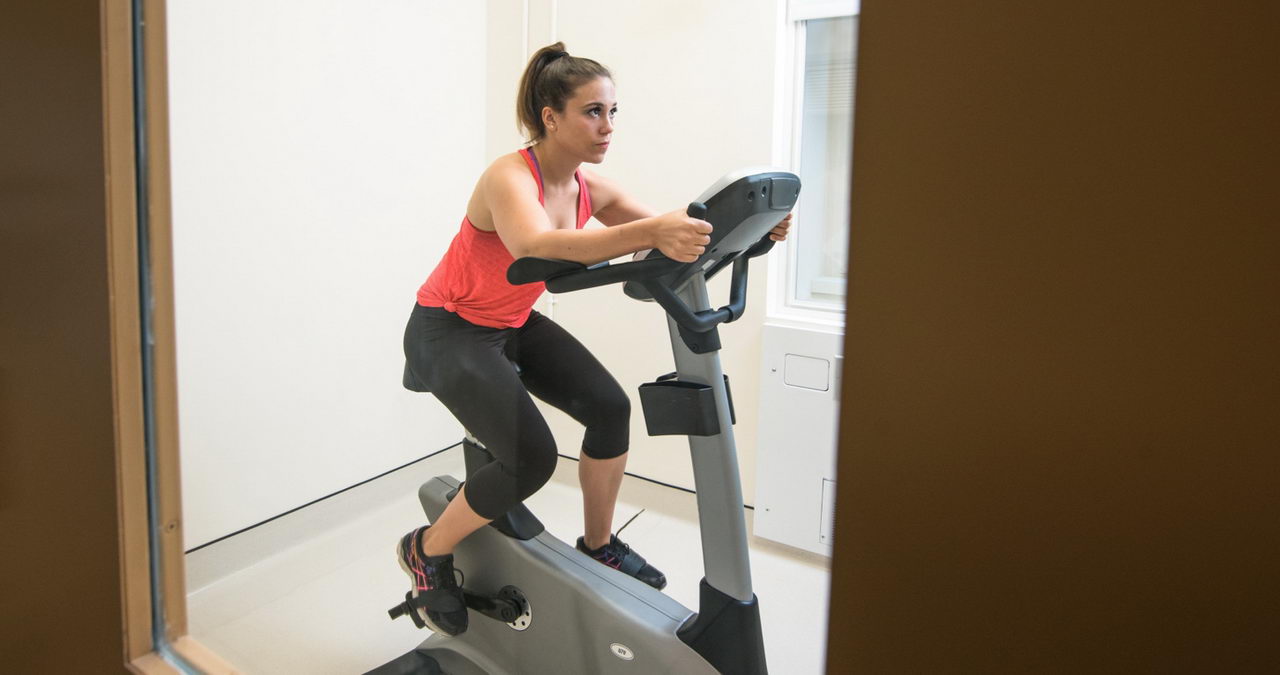Background
The human metabolic chamber uses indirect calorimetry, which measures oxygen consumption and carbon dioxide emissions. Real time energy consumption is calculated by the Weir formula.
The metabolic chamber has been widely used to study physiological activities such as diet, sleep, exercise and energy metabolism and explore mechanisms in disease states such as obesity and type 2 diabetes. In the 1980s Cambridge University and the United States National Institutes of Health built metabolic chambers. Since then dozens of research institutions, including those in have constructed metabolic chambers for research. Metabolic chambers, or more specifically Whole Room Indirect Calorimeters, have become one of the most important research tools for studying human energy metabolism. And as the prevalence of metabolic diseases has increased, and the role of energy metabolic balance has received greater attention, metabolic chambers have been used as an entry point for the prevention and diagnosis and treatment of diseases.
Advanced research methods for exploring human energy metabolism
What can the human metabolic chamber do?
Basal Metabolic Rate refers to the energy expenditure value of lying still in a thermoneutral environment after waking in the morning, accounting for about 80% of 24 hour Energy Expenditure, and is also the most commonly used indicator in energy metabolism research, affected by factors such as Fat Free Mass (FFM), Fat Mass (FM), gender, age, race, temperature, physiological conditions and disease status.
Sleep Metabolic Rate is generally calculated by selecting a three consecutive periods of physical activity during sleep or during the lowest mean energy consumption. Metabolic chambers can be used to determine the effects of sleep rhythm disturbances on energy balance or metabolic substrate selection, for example, and then explore the mechanisms by which sleep deficiency or sleep status leads to metabolic diseases such as obesity and type 2 diabetes
Diet Induced Thermogenisis effect, accounting for about 10% of 24 hour Energy Expenditure. The metabolic chamber can be used to explore the impact of DIT by restricting post-meal activities to limit exercise energy consumption, and thereby to explore the impact of dietary total calories, nutrient composition ratio, eating time and scheduling on DIT, and the effect of diet and energy expenditure on the development of metabolic diseases such as obesity.
The Human Metabolic Chamber can be used for detecting various types of sedentary behaviour energy metabolism, such as watching television, using mobile phones and playing video games and allow and assessment of the effect of modern lifestyle on energy metabolism and metabolic diseases.

Advanced means of assessment
for human metabolic rate detection
Using the metabolic chamber:
Detection of energy metabolism in a large sample of healthy subjects to establish a normal reference range of energy metabolism in the population;
Recruit patients with various endocrine diseases to evaluate the disease status of patients with various endocrine diseases and the impact of intervention on clinical treatment process;
Establish a cohort for follow-up to explore the regularity of energy metabolism in the occurrence and development of the disease;
To assess or predict the efficacy of existing treatments for metabolic diseases such as obesity;
Auxiliary new drug development, such as weight loss drugs to improve energy metabolism rate, fat loss drugs to enhance fat oxidation.
Typical chamber type (conventional protocol)
Energy Metabolism Monitoring System
Metabolic chamber (including conventional illumination, doors and windows, toilet bowl, basin, blood- drawing port.)
Temperature control system (16-30 °C)
Fresh air supply system
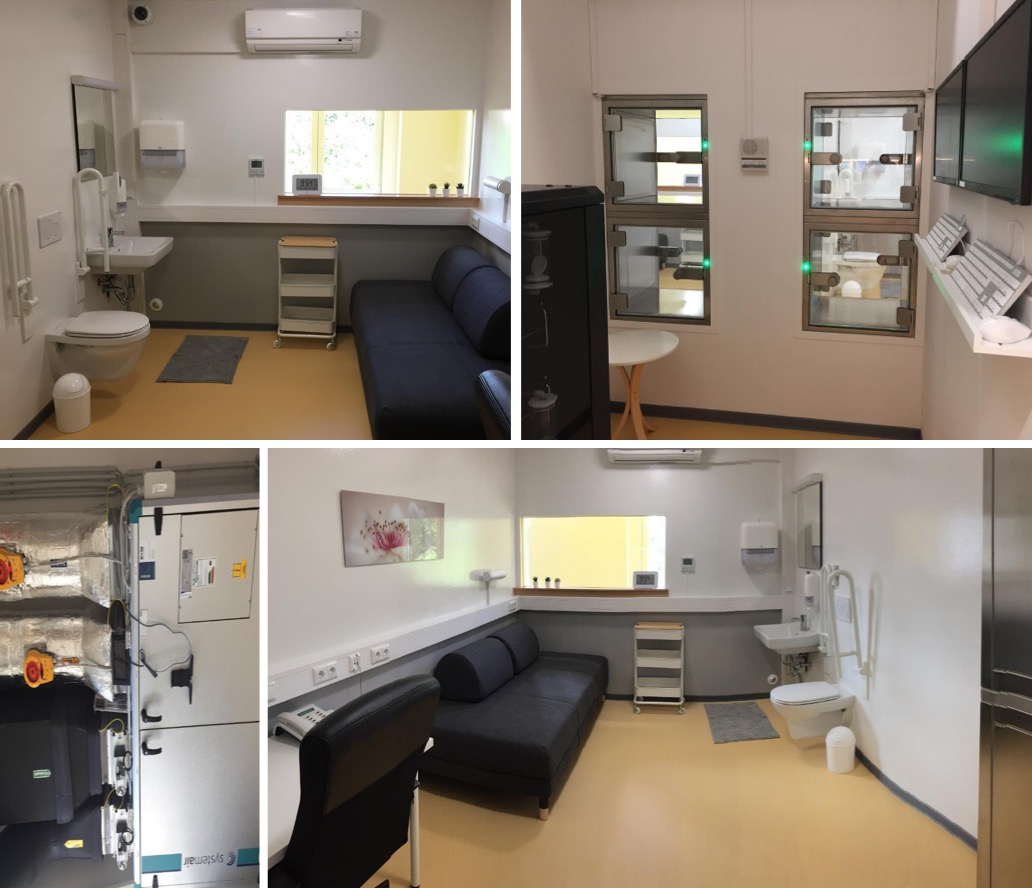
Stable isotope gas analysis system (13C, 18O), specific nutrient study
Extreme Temperature Environmental Simulation
Specific Light Simulation System
Specific sound effect simulation system
Odor simulation system
High altitude hypoxia environment simulation system
Automatic Urine / Faecal Separation toilet
Human Behavioural Studies
Wearable physiological parameter monitoring system
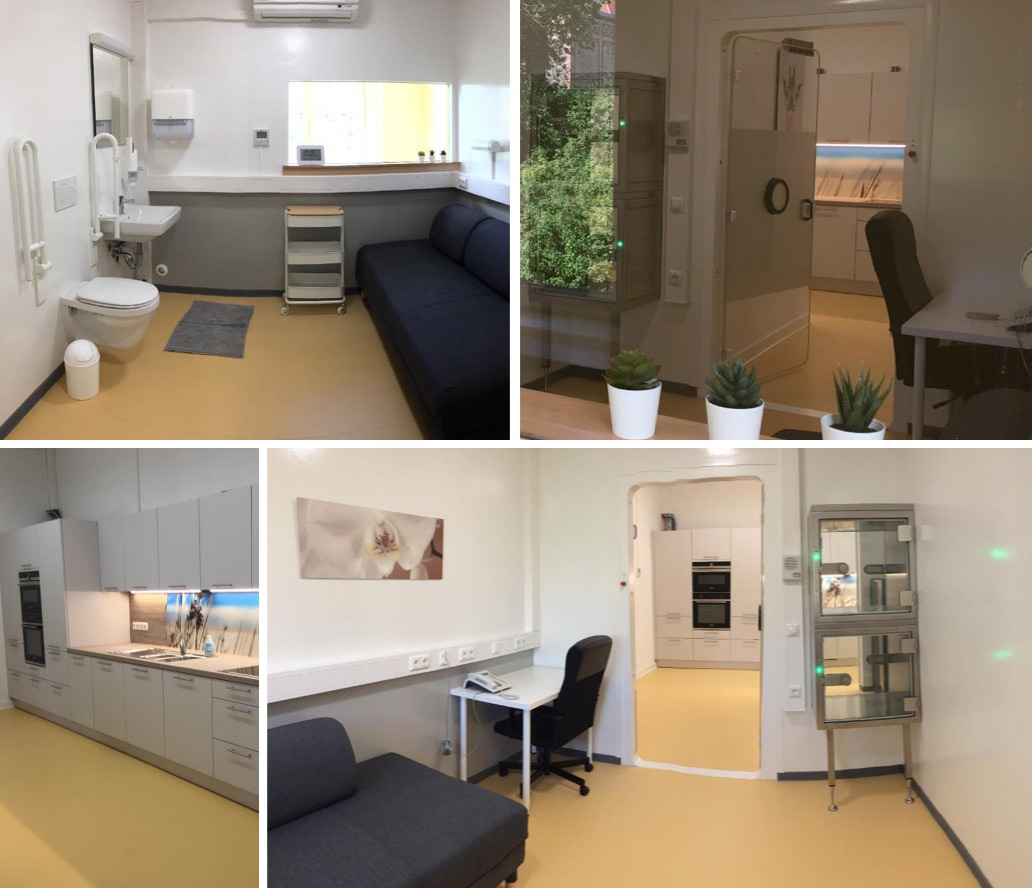

Complete Turn-key Service





Sable Systems was founded in 1987 and is now based in Las Vegas, USA. The company is specialized in the R & D and equipment manufacturing of respiratory metabolism monitoring technology, which can provide metabolic monitoring solutions for animals and humans (flies, hummingbirds, gecko, reptiles, rodents, rabbits, dogs, livestock, primates and humans, etc.). Sable is a company founded by scientists that continues to develop cutting-edge metabolic monitoring systems to ensure that users obtain data with the highest accuracy and resolution.
At present, almost 20 top universities, hospitals and institutes in the world have selected Sable's human metabolism monitoring chambers, with users in China, North America, Europe, Australia and the Middle East, and their market share is the first in the world.
China Gate Scientific is the exclusive agent and partner of Sable Systems in Greater China. It is a scientific and technological platform with 15 years of experience in the operation and implementation of biomedical scientific research equipment, which brings together advanced project landing experience in Europe and the United States and strives to provide perfect life science systems and professional technical solutions for Chinese scientific researchers. Since 2006, with the support of the majority of scientific research institutions and hospitals in China, China Gate and our consultants in various regions have provided equipment and technical support for hundreds of biomedical laboratories. Our company is equipped with professional technical engineers and project management experts. After strict professional training by Sable Systems, we provide high-quality and efficient services for customers. China Gate can provide one-stop human metabolic chamber project consultation, design, construction, training, and support with experimental design, data processing, equipment maintenance and other comprehensive services for users in China.
Consultant

Research Professor, Department of Physical Sciences, University of Nevada
Dr. John Lighton, founder and chief scientist of Sable, is a world-renowned respiratory metabolism research expert, adjunct professor in the Department of Physiology at the University of Nevada, Las Vegas, has published nearly 100 articles on metabolism, and is the author of: Measuring Metabolic Rates: A Manual for Scientist. Oxford University Press.

Dr. Russell Rising holds a Ph.D. in Nutritional Sciences from the University of Arizona in Tucson, Arizona, USA. From 2015, he was the director of the Core Metabolic Laboratory for Obesity at Columbia University/Department of Medicine in Manhattan, New York, USA. Before then, from 2010, he was Senior Research Fellow at St. Luke's Hospital Center for Obesity Research in Manhattan, New York, USA. Dr. Rising has published nearly 50 scientific papers on metabolic research.






